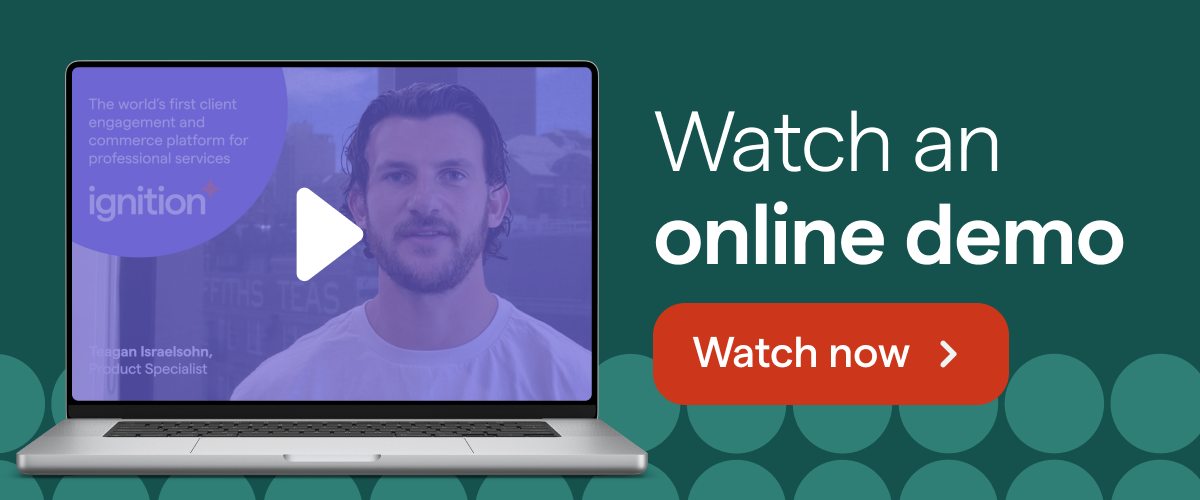CPA Sean M. Duncan reveals how advisory services has impacted his firm

Sean Duncan’s net income percentage has gone up over four times since he transitioned his firm SMD Consulting & Accounting, LLC, from tax prep to advisory. In this Q&A, he describes how and why he made the move.
Q. Why did you want to start offering advisory services in the first place?
It’s always been our differentiation point. When I started the firm we were SMB Consulting and Accounting.
Sean M. Duncan, CPA
Sean: We already knew there was a need for people to have advice from their practitioner. It’s very easy to file a tax return; it’s very easy to find a bookkeeper, but they really want and need insights and advice. In fact, a lot of time they assume you’re giving them that advice and it’s not happening. There’s this massive need for people to get insights from the experts, which is their tax experts or bookkeeping professionals.
So, I specifically started there, but then fired all the tax returns to just do advisory, because I saw the need was so great. It’s a heck of a lot more profitable. My average client back when I was doing tax returns was worth $800 per year. My average client now is worth $11,000 a year – and that’s going up again, and that’s over a span of four to five years. So, it’s the multiplier effect.
Then there’s [the fact that] I like to help people out. I’d rather do something meaningful and valuable than go just, ‘There goes your tax return. Done’, and then do it again… We went into advisory because it was more value-added and more profitable. And honestly, it was the heart and soul of the mission. It’s as meaningful to me, as much as it is to them’.
Q. What key steps did you have to take to launch advisory services?
There are six steps that I go through. I come back to these every time a large decision happens.
Sean M. Duncan, CPA
Sean: I teach The Chief Proactive Advisor program that Ignition sponsors. I start with, ‘What am I passionate about?’ And the second step is, ‘What are my strengths – not focusing on my weaknesses’. Then I focused on who I want to help. Then on how I want to help those people using and leveraging the passions and strengths I have. Then, I went back and said, ‘Okay, what does success look like for you? What am I trying to build for myself and my life?’, which leads to [developing] a business plan.
I come back to that process every time a large decision happens. When it was time to fire two-thirds of my revenue of tax prep [to move] completely to advisory – this is what I did. When I decided I wanted to add a wealth management service – this is what I did.
The reason I have a program is I teach others how to do that same thing too, because they get stuck; they don’t know where to go; they don’t know even how to make decisions… Fear drives too many accountants. We’re so afraid to make a change that we just don’t. And if we’re given tools to help us through a process of change, we actually start making change.
Q: What challenges did you experience when you launched advisory?
I priced incorrectly and I had the wrong employees at the time.
Sean M. Duncan, CPA
Sean: I was a tax prep bookkeeping firm that did a little bit of advisory and shifted to, ‘We do advisory and we don’t even do tax prep at all, and still do books’. The team that I had isn’t the same team that is going to be where the future is. So, I understand and acknowledge that I have to change people. But [the] clients that hired me, they hired me for tax prep… I had to be willing to understand there’s going to be this ebb and flow of losing employees, losing clients and changing processes.
It is hard. This is where there is that fear [I mentioned] in the previous [question]. I screwed up a lot… We were doing [written] engagement letters and that was a pain to try and do, so we started automating it, and then began building efficiencies.
Q: Did you bundle accounting and advisory?
One of our mistakes was trying to bundle consulting and tax returns for a fixed fee.
Sean M. Duncan, CPA
Sean: It was awful because then they didn’t understand what portion they were paying for consulting and which portion they were paying for tax. We still line-item them and we very explicitly let them see what they were paying for.
Delineate specifically the advisory so that you can then turn around and quantify the value. If I saved you $700,000 and you then go, ‘Man, you’re expensive’. I’m $700 a month for advisory, so you’re spending about $8,000 on me a year to save this amount. But if they see the full number for tax and bookkeeping, they don’t understand… Line-item and delineating makes [for] very clear communication. Then also, if they want to opt out for something they bundled into they can do it.
One of the things we also do is we apply a [bonus] discount: If you sign up for these three it’s $900 a month for consulting and bookkeeping is $600 a month, and some other project is $10,000. But if you do all three, [I’ll] give you a discount of $100 a month on your bookkeeping. If they unbundle any one of those pieces, then I can go ahead and raise the price and get a better margin on it. So we anticipate they’re going to unbundle then we create a value perception there.
Q: How are advisory services impacting your revenue?
My net income percentage has gone up over four times what it was when I was doing tax prep.
Sean M. Duncan, CPA
Sean: I have much more margin for everything that I do because, if you really think about it, I charge $11,000 for consulting and advisory service, opposed to just $800 grinding tax returns. Even the tax return clients are calling in periodically with questions, and they don’t want it to be an hourly rate thing…
Now, we just capture it and we’re bundling it up and we’re charging for stuff that we have historically given away. Our industry is terrible about giving away free information.
[The] example I use in seminars, when we’re talking about profitability, [is about] forming an S Corporation: If I’m going to make the S Corporation… that’s just you filling out one form. You fill out a 2553, you send it off and what does that take? Fifteen minutes and that’s what the CPA says.
But the problem is, when you fill out the 2553, you have to start making the payroll adjustments that have to be reported. Maybe they have reasonable comp – you have to calculate [that]. You have to change the bookkeeping to reporting. You might have to change their health insurance stuff, because now [they’re] an S Corp. You then have correspondence with the IRS, which is now getting worse, because they’re about 18 months behind on accepting them, so then they’re going to get a rejection letter.
If you charge by the hour, most of the time the CPA goes, ‘I’ll just answer it for you’. Those are so many free services. You could have charged $75. I charge $2,500. If the IRS calls you, I’m not going to charge you again, that would be silly. I’ve now changed something that went from $75 into $2,500 as a project, and this is an example that’s in every CPA firm. Almost every single one of them cheats themselves out of it.
Q. How and why do you use Ignition in your firm?
For me, it really is wild efficiency as it relates to billings and collections – and time!
Sean M. Duncan, CPA
[Before I started using Ignition] I’d put together a proposal in Microsoft Word, then double check every word, then email it to the client. If things progressed, I would do the same thing with an engagement letter, except the engagement letter would have to be printed out and mailed to the client. They would have to sign it and send it back. Then it would have to be filed somewhere. I had to hope it wasn’t misfiled by a junior staffer, and that there wouldn’t be any issues retrieving it if any disputes arose with the client. Or if I needed to claim on my errors and omissions insurance.
[Now] an intern – possibly one with only a couple of weeks on the job – fills in a few details on Ignition’s proposal template and emails it off. All going well, they do the same with an engagement letter template. The client e-signs the document and it’s stored online. Everything is laid out clearly in writing. If any conflicts arise, the relevant documents can be located and sent to the client, or our insurance company, in a matter of seconds.Over to you
Want to learn more about how Ignition can boost your bottom line and improve your work-life balance? Watch our online demo and see how Ignition makes it simple for you to engage clients, get paid and run your accounting firm on autopilot.



